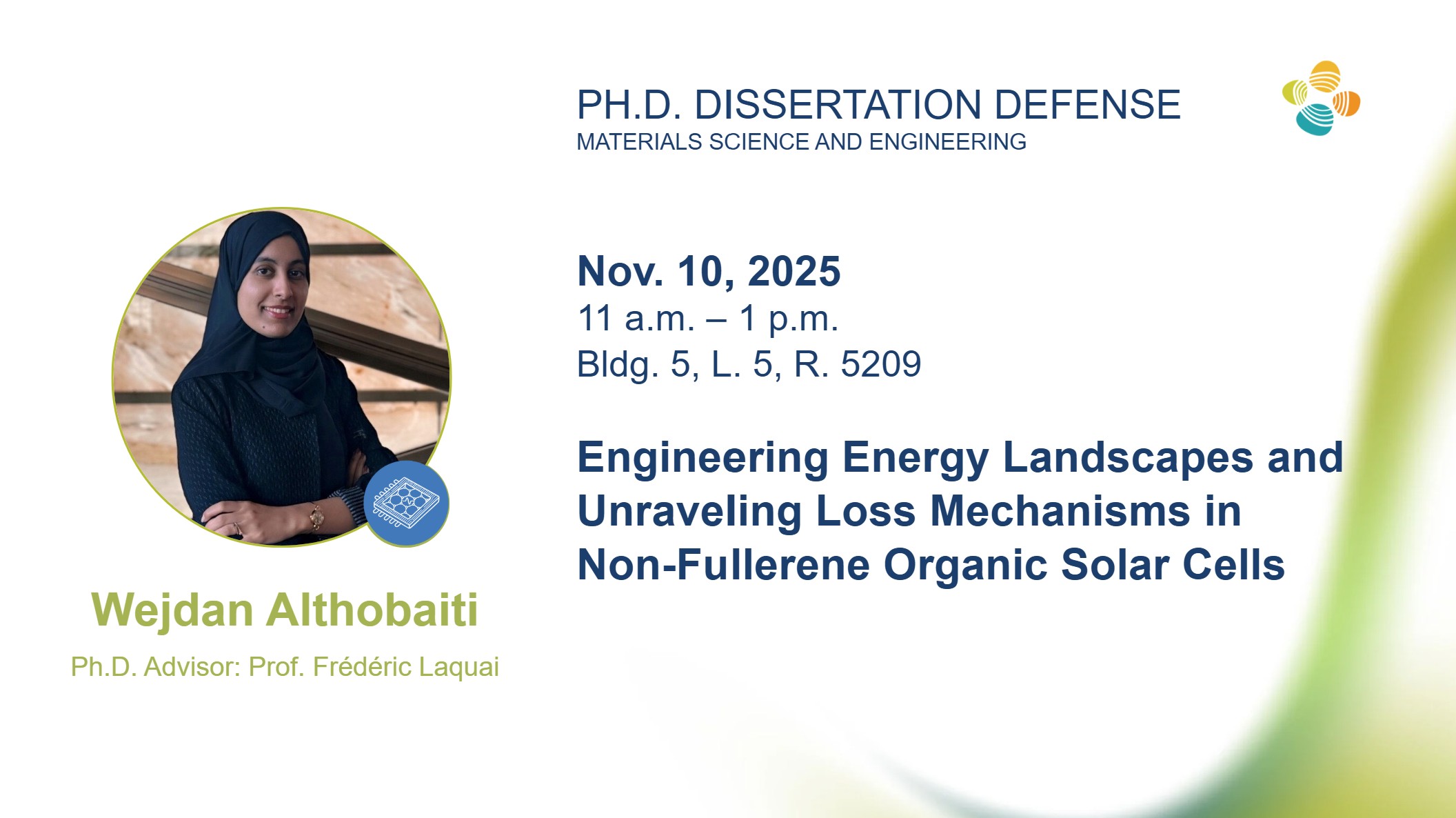Nov 2025
Engineering Energy Landscapes and Unraveling Loss Mechanisms in Non-Fullerene Organic Solar Cells

Committee Members Information
- Ph.D. Advisor: Professor Frédéric Laquai
- Committee Chair: Professor Martin Heeney
- External Examiner: Professor Dieter Neher
- Committee Member: Professor Shadi Fatayer
Abstract:
This dissertation examines the limitations of organic semiconductor materials for solar energy conversion using time-resolved spectroscopic methods. Over the past decade, organic photovoltaics (OPV) have gained significant attention, with organic solar cells (OSCs) now achieving power conversion efficiencies (PCEs) above 19%. Despite this progress, OPV technology still faces several challenges hindering commercialization. Therefore, it is essential to develop a detailed understanding of the photophysical processes in these devices, particularly the loss mechanisms that limit efficiency and how they are influenced by both the materials’ structures and the energetic landscape of the donor–acceptor bulk heterojunction (BHJ). The primary objective of this dissertation is to investigate and identify energy and carrier loss channels in organic donor–acceptor systems using time-resolved ultrafast optical spectroscopies, as well as steady-state and time-resolved electro-optical techniques.
In the first part, I focus on the energetic landscape at the donor–acceptor interface, which governs charge generation and recombination in non-fullerene acceptor (NFA) based OSCs. I investigated a series of 15 BHJs composed of poly(3-hexylthiophene) (P3HT) and Poly[2,5-bis(3-tetradecylthiophen-2-yl)thieno[3,2-b]thiophene] (pBTTT-C14) as donor polymers were paired with selected NFAs exhibiting varying interfacial energetics. Results show that internal quantum efficiency (IQE) is limited by geminate and non-geminate recombination, especially for diagonal bandgaps (defined as the energy difference between the donor's ionization energy (IE) and the acceptor's electron affinity (EA)) below 1 eV, independent of IE offset. I observed that charge recombination is facilitated in systems with small diagonal bandgaps, consistent with the energy gap law.
The second part of the dissertation presents the synthesis, properties, and device performance of a novel NFA, coded CO5BCN, designed based on in-silico computational predictions for its high ionization energy, large quadrupole moment, significant oscillator strength, and low bandgap. Structurally related to earlier-reported NFA, coded IDTBCN, CO5BCN differs by two bridging oxygen atoms in its donor core, yet this small modification resulted in lower device performance. A comparative study using advanced spectroscopies alongside film morphology analysis through grazing incidence wide-angle X-ray scattering (GIWAXS) clarified the origin of this behavior, providing insight into how the chemical structure and electronic landscape of NFAs influence device photophysics and performance.